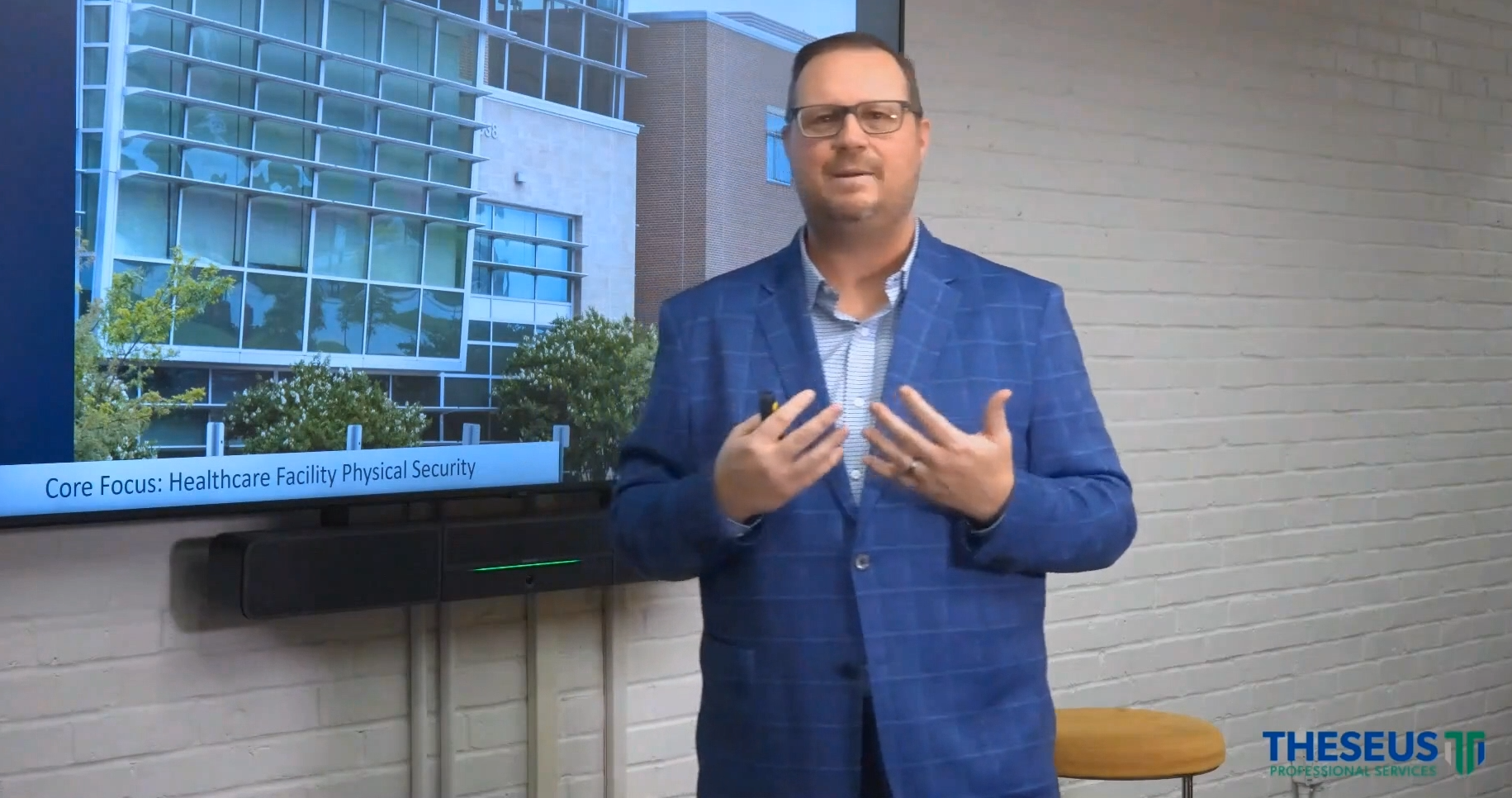3 min read
Building Better Security Operations: Lessons from Healthcare for Every Industry
![]() Theseus Team
:
Jun 4, 2025 10:42:45 AM
Theseus Team
:
Jun 4, 2025 10:42:45 AM

Security operations are built on people, presence, and process.
Whether you're securing a hospital, a university, a shopping mall, or a corporate headquarters, the fundamentals of effective security remain constant—awareness, deterrence, communication, and rapid response. While this article draws heavily from healthcare security operations, the lessons and strategies outlined here can be easily adapted for other industries looking to strengthen their security postures.
Presence: A Powerful Psychological Deterrent
In healthcare environments, the physical presence of guards or officers creates a two-sided benefit—a sense of safety for the innocent and a sense of scrutiny for those with malicious intent. This dynamic applies equally in other high-traffic or vulnerable environments.
-
Retail: Visible uniformed personnel in entryways and public areas help deter shoplifting and reassure patrons.
-
Higher Education: Patrols around residence halls and academic buildings deter vandalism or harassment and build trust with the student body.
-
Corporate Campuses: A staffed lobby or roaming security officer sends a clear message that the premises are actively monitored and protected.
Whether it's a contractor in a basic guard role or an armed security officer, selecting the right level of presence should be based on an environmental and demographic risk assessment. Key factors include crime rates in the surrounding area, traffic patterns, and facility-specific vulnerabilities.
Innovative Tools: Canine Units and Customer Perception
While armed guards may be necessary in some scenarios, others may benefit from a more community-friendly approach. One such method is the deployment of canine units.
In healthcare settings, well-trained canines can provide security while also calming patients and visitors. This concept translates well to:
-
Transportation Hubs: Airports and train stations often use canines for explosive detection and deterrence with a softer visual impact.
-
Event Venues: Stadiums and arenas use K9 units to provide a sense of security while minimizing aggressive visual cues.
-
Corporate Security: High-value campuses can employ canine units during off-hours to support deterrence without appearing overly forceful.
Canines bridge the gap between approachability and authority—especially when paired with handlers who understand public engagement.
Technology as a Force Multiplier
Presence alone isn't enough. Security officers must be equipped with tools that allow them to detect, respond, and document incidents quickly.
-
Video Surveillance & Access Control: Officers should understand how to operate and interpret the systems. It’s not enough to have cameras; it’s about knowing how to act on what’s seen.
-
Duress Buttons: One of the most effective technologies in any environment. Whether in a hospital admissions office, a school counselor’s room, or a financial service branch, a duress button initiates immediate response rather than retrospective action. For example:
-
A hospital receptionist anticipating an assault may trigger a button to alert a control room.
-
A bank teller sensing an imminent robbery may activate a silent duress alert linked to local law enforcement.
-
-
Communication Systems: Radios, panic apps, or dedicated communication platforms help dispatch the right person to the right place at the right time. Understanding who’s closest to a situation is key—especially in sprawling environments like:
-
College campuses with multiple buildings
-
Industrial parks with several loading docks or warehouses
-
Shopping malls with multi-level layouts
-
Additionally, knowing which officers hold special certifications (e.g., CPR, AED, de-escalation) allows you to assign the most capable responder when every second matters.
Policy, Training, & Accountability
Security personnel must have clearly defined Standard Operating Procedures (SOPs) tailored to the specific risks of their environment. These SOPs should cover:
-
How to respond to specific incidents (e.g., violence, theft, medical emergencies)
-
Reporting procedures and escalation paths
-
Use-of-force policies
-
Situational awareness and customer engagement protocols
Critically, these procedures need to be reinforced through regular training and review cycles. Whether it's quarterly drills or semi-annual workshops, reinforcing expectations ensures guards and officers are prepared when reality strikes.
Security Must Be Intentional
Regardless of the industry—healthcare, education, finance, hospitality, or logistics—security operations must be intentional, well-informed, and adaptable. A solid risk assessment is the foundation. From there, combining visible presence, smart technologies, trained personnel, and clear procedures builds an operation that both prevents incidents and responds effectively when they occur.
For organizations looking to evaluate or enhance their security posture, partnering with an expert consultant can make all the difference. At Theseus Professional Services, we specialize in risk-informed, practical strategies that meet real-world challenges—whatever your industry.
Want to learn more about building a resilient security operation?
Watch our free on-demand webinar, “Healthcare Ring of Security,” featuring insights that transcend healthcare and apply to any facility security program. Whether you're managing a hospital or a corporate campus, the strategies discussed can help improve your environment’s safety and operational readiness.
➡ Watch now and connect with Theseus for consulting across all critical environments.
The "Healthcare Ring of Security" webinar is available on-demand, allowing you to watch at your convenience. Don’t miss this opportunity to learn from one of the industry's leading experts and take your healthcare facility’s security to the next level. To register and access the on-demand webinar, click here >>
 BONUS: DOWNLOAD OUR FREE IN-HOUSE SECURITY RISK ASSESSMENT CONSIDERATIONS GUIDE
BONUS: DOWNLOAD OUR FREE IN-HOUSE SECURITY RISK ASSESSMENT CONSIDERATIONS GUIDE
Security professionals are constantly looking for innovative ways to secure their facility and provide a safe environment within their budget. And, they are also constantly looking for resources to help them achieve that mission while expert advice is hard to come by.
Fortunately, we have released a considerations guide that will help security professionals perform their own in-house security risk assessment.
What's Inside?
This guide is intended to assist you with performing an in-house physical security risk assessment. In many cases, assistance from a third-party expert, like Theseus Professional Services, is required.
Identification of missing or inadequate physical security measures that safeguard assets (people, property, and information) and critical business functions is of paramount importance. The findings of a security risk assessment are used to measure and communicate the level of risk to the organization.
- Process Evaluation
- Threats
- Vulnerability Assessment Highlights
- Electronic Security Systems Considerations
- Site Considerations
- Building Entrances and Exits
- Common Functional Areas
- Building Envelope
- Utilities and Building Services
- Building Systems




